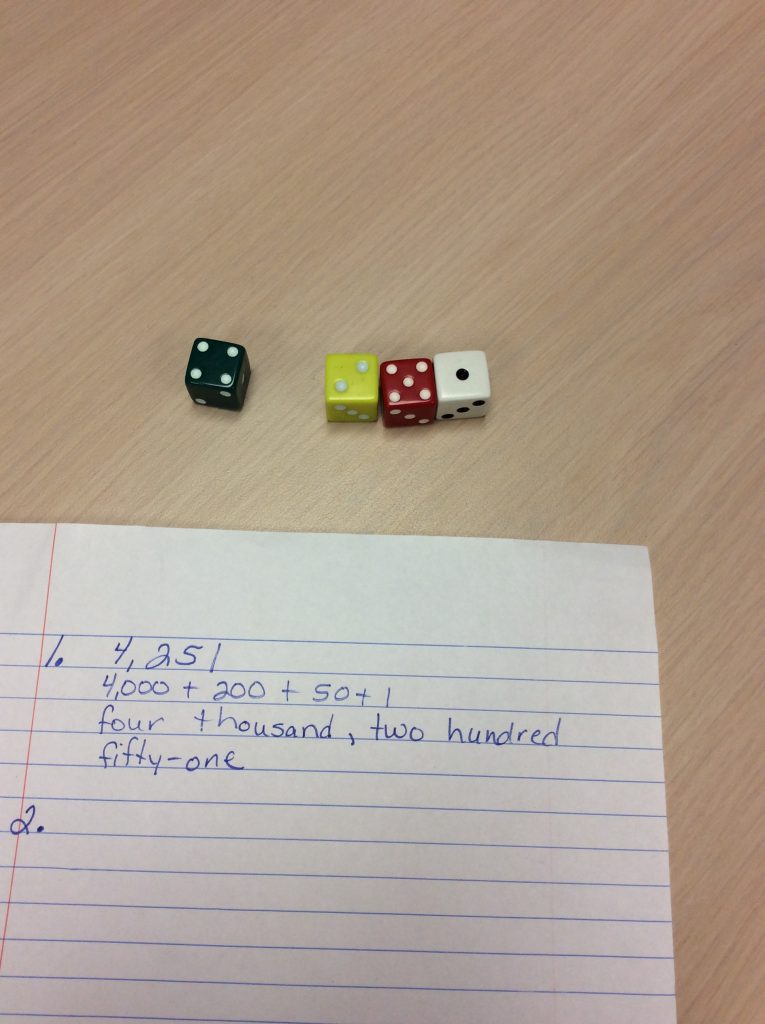Let’s create a guided math small group lesson based on state standards. I am going to specifically discuss creating a hands-on activity for small group lessons.
When each group comes back to my table, I have a short amount of time for the students to learn. Research shows that if students are active participants, they understand more. In fact, I don’t explain everything to my students in a large group mini-lesson because then the lesson becomes a long lecture. (and students tune you out)
When creating a Guided Math Small Group Lesson, I choose the state standard that the students will be learning about and applying. The example lesson I am going to show you will use the following state standards for 2nd-4th grade and process skills.
Process Skills
PS.1: Make sense of problems and persevere in solving them.
PS.6: Attend to precision.
PS.7: Look for and make use of structure.
PS.8: Look for and express regularity in repeated reasoning.
State Standards
Indiana 2nd grade 2.NS.2: Read and write whole numbers up to 1,000. Use words, models, standard form and expanded form to represent and show equivalent forms of whole numbers up to 1,000.
Indiana 3rd grade 3.NS.1: Read and write whole numbers up to 10,000. Use words, models, standard form and expanded form to represent and show equivalent forms of whole numbers up to 10,000.
Indiana 4th grade 4.NS.1: Read and write whole numbers up to 1,000,000. Use words, models, standard form and expanded form to represent and show equivalent forms of whole numbers up to 1,000,000.
CCSS Math 4.NBT.A.2
Read and write multi-digit whole numbers using base-ten numerals, number names, and expanded form.
Guided Group Small Group Lesson
This Guided Group Small Group Lesson uses decks of cards and dice to teach whole numbers.
So in short students need to practice standard, expanded, and word form. Teachers should introduce the concepts with dice. The students should draw 2 playing cards and the students need to write the number in all 3 forms on their dry erase boards. Continue to do this with only one deck of cards and the teacher should model while the students then practice. This activity is an introductory modeling lesson.
The next day, the students need to practice this concept in small group. In order to have the students be able to each manipulate the numbers and work at their own pace, use dice. Tell the students they are going to “create numbers, write numbers, expand numbers, and read numbers.
Here are four digit numbers.
If you have students who need challenged, this lesson can do just that because the students just keep adding dice. Hint: Students may become confused with large numbers. Here is one case from a teacher.
“Eventually one student had so many dice that he was getting confused as to the largest place value and where the commas went. After he expressed his concern, I handed him some paperclips and asked him if he could use them somehow. After thinking for a second, he slide them into the spaces between the numbers. Oh yeah!! Look at what he did! (So proud of him…he made the connection about the spaces between dice to where the commas go!)”
Do this activity for two days. On the second day, the students just start where they had left off the day before. Each child works at their own pace (which allows for IEP accommodations). When the students get stuck, they have trained them to describe where they are stuck at or where they are confused. (This helps them to use the vocabulary to analyze their thinking and their math communication skills.) For some students, when they verbalize their problem, they figure it out. Others need intervention, but they are learning to talk math!!!
When I create a Guided Math Small Group Lesson based on state standards, I make sure the first one or two lessons are hands-on activities where the students manipulate something. This helps them to visualize an abstract concept. The more the students play with the math, they develop number sense.


